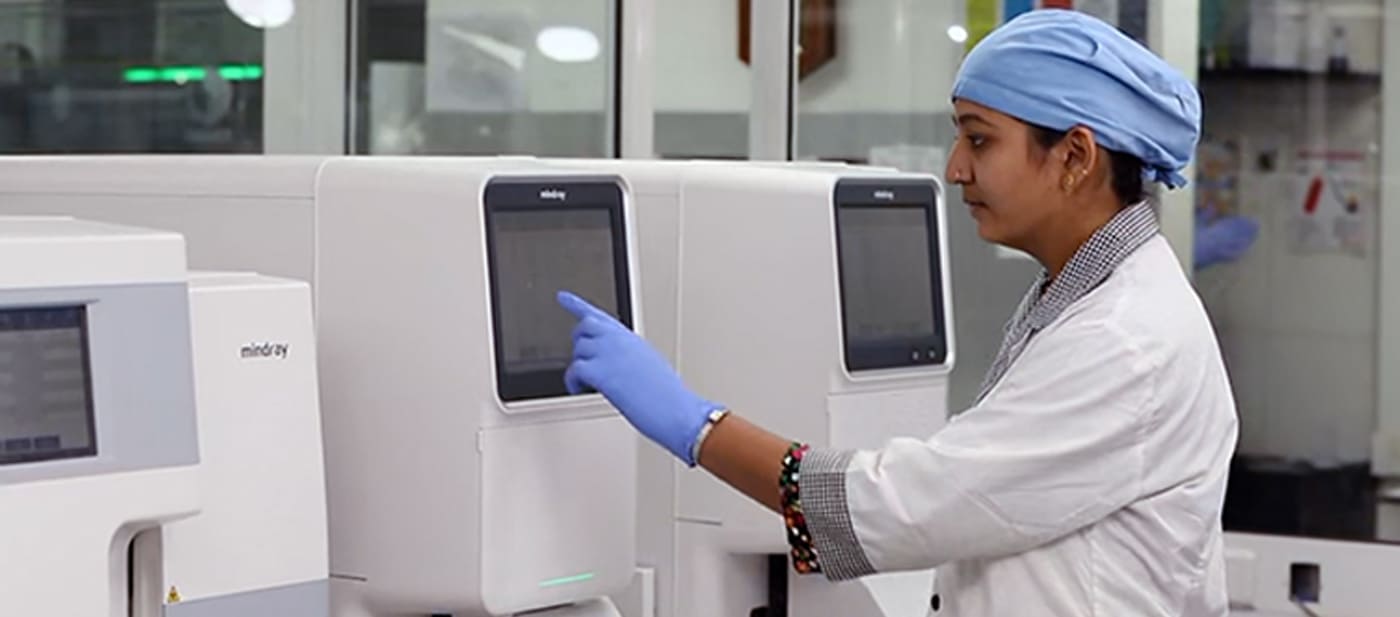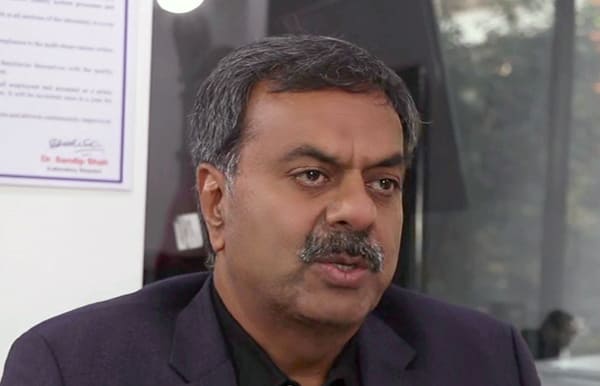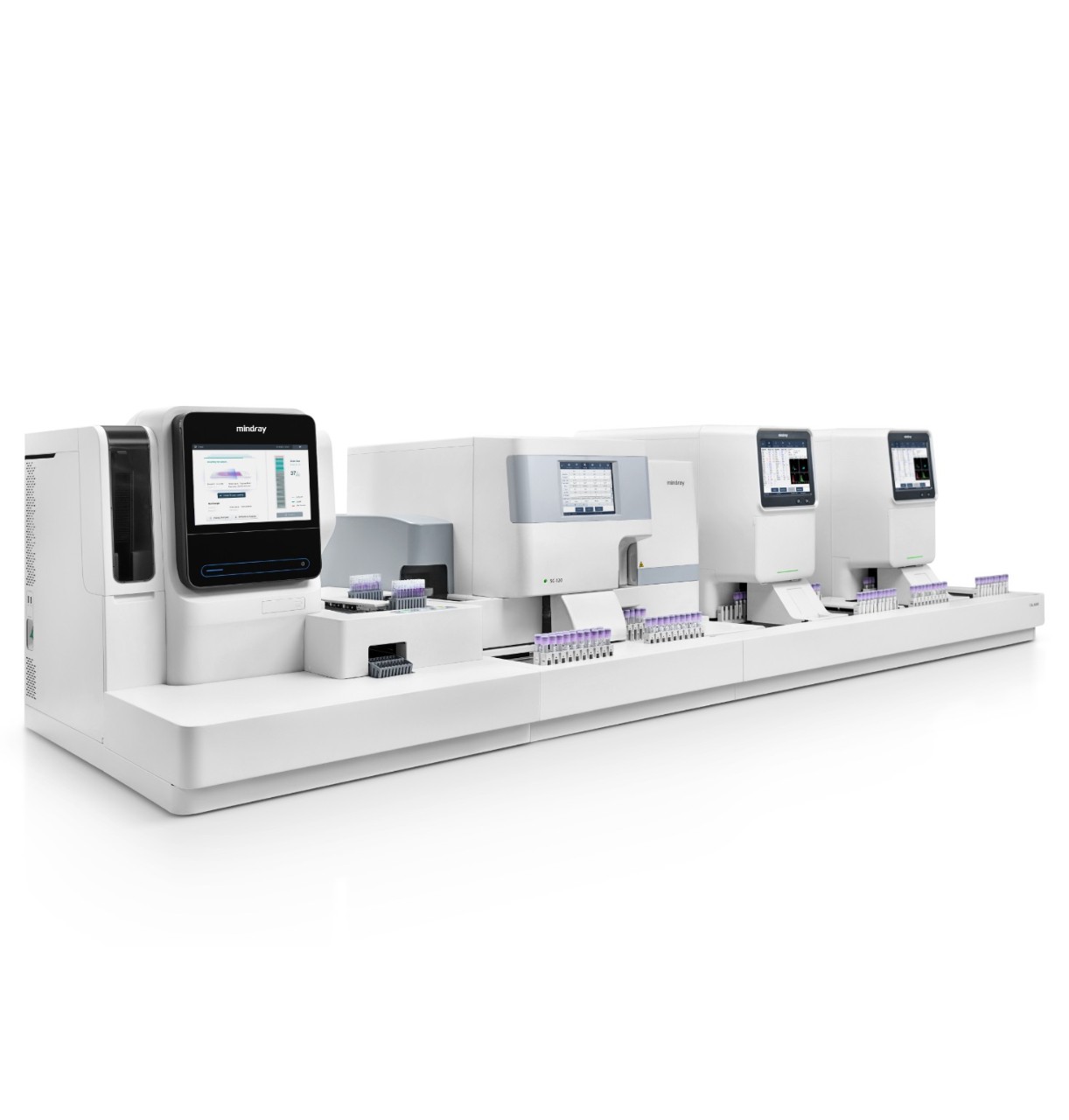Neuberg Supratech becomes a perfect example of how technology helps diagnostics businesses to thrive even in critical conditions.
How does one measure the success of a diagnostic lab? By the number of test samples processed at the lab? Or by quality indicators (preanalytical, analytical, and post-analytical), accreditation? Reduced operation cost? Customer satisfaction backed up good turnaround time or any other parameter?
Well, most of us will agree that it’s all of these parameters and more. But have we ever realised the role of technology that helps us achieve such success in our diagnostics business?
Neuberg Supratech becomes a perfect example of how technology helps diagnostics businesses to thrive even in critical conditions. Neuberg Supratech’s strategy has been simple yet very effective.
They have installed Mindray’s CAL 6000 that defines a new generation of the cellular analysis line. The automated system which combines Hematology Testing and Slide Smear Preparation, Staining and Drying has led them to minimise manual interventions, achieve faster and reliable reporting, improve productivity and ensure happy customers.
Thriving on technology
The Neuberg Diagnostics chain, with labs across India, the UAE, and South Africa, has consistently excelled by leveraging the latest technology and techniques accessible to developing countries. Supported by high-end technological infrastructure, Neuberg Supratech has emerged as one of the most efficient and high-quality laboratories in India. Its reference laboratory, based in Ahmedabad, is a unit of Neuberg Diagnostics.
Neuberg Supratech’s huge setup has a capability to perform over 5000 varieties of pathological investigations and has promoted prevention and early diagnosis, focused wellness programmes and structured disease management programme for rare diseases using the most advanced technologies assisted by Data science and AI tools. However, a lab with such massive workload had to face its own set of challenges such as overburdened staff, lower efficiency, a high failure rate of old system etc. Having studied the laboratory’s challenges, Mindray came up with a haematology automation solution.
“Being a technocrat we were looking for solutions in automation for Hematology, Biochemistry, Immunology etc. The dreams were big but like every laboratory, we also faced challenges like shorter TAT, reliable results, reduce manual intervention and providing better clinical values for patient benefit. During these difficult times of fatal vector-borne diseases and unavoidable clinical conditions that are either genetically acquired or may be due to some clinical conditions, it is mandatory for a setup like ours to help patients with a correct clinical co-relation, additional clinical information like appropriate flagging, clinically significant newer reportable parameters and research parameters for a perfect and reliable diagnosis. We recently upgraded to the all-new Haematology Automation System from Mindray i.e. CAL 6000 which was the perfect solution to all the challenges we faced”, informs Dr Shah.
The automation advantage
To automate its workflow and improve productivity as well as overall efficiency, Mindray proposed replacing the old system with the CAL 6000 Hematology system. Now, CAL 6000 offers a throughput of up to 220 tests per hour for CBC+Diff and 120 slides per hour which indeed is a good outcome. The patented “two-way loading” technology of the track enables the smart distribution of workload and enhanced efficiency and productivity. The state-of-the-art track automation systems mentioned earlier combines Slide Smear Preparation, Staining and Drying which has led to minimal manual intervention and faster, reliable reporting. It also has a feature of Multirule and Reflex testing which facilitates the user to decide whether further clinically relevant tests are necessary or not for a better and perfect clinical diagnosis of the patient.
“Automation is the need of the hour and especially when you working with a huge number of patient samples turn-around-time is the major factor. Diagnostics today is a service industry and clinicians except for a good TAT. If I speak of today’s scenario Dengue is the major issue wherein Platelet transfusion becomes a major constraint. CAL 6000 has helped us not only with the TAT but also a reliable Platelet count wherein unnecessary transfusions also were avoided. And that proves better patient care.
Overall the NLR parameter has also proved to be a better prognosis marker in case of COVID-19 testing. Also, the newer parameters like IG, Ret-He, etc have helped us in accurate diagnosis and prognosis of various diseases”, says Dr Bhavani Shah.
Reliable system enhances efficiency
Higher stability and reliability of the CAL 6000 system have also brought significant benefits for Neuberg Supratech in terms of enhanced efficiency and faster TAT. “One of the important improvements in our haematology practice has been brought about by this track system. The sample results are triggered by a criterion wherein we enter the sample rack and it automatically steps back for a ‘rerun’ or ‘reflex’ check. For example, if we have set criteria for reticulocyte done for every patient having haemoglobin less than 6, so we need to run the same sample again. The instruments perform a rerun as per the rules we have assigned. The re-exam criteria on CAL 6000 can be defined by many conditions, such as time, patient’s age, gender, department, etc. This helps minimise the number of blood smears we prepare in our laboratory. We have of late starting reporting Neutrophil-to-lymphocyte ratio (NLR) parameter reported by Mindray CAL 6000 which is used as a marker of subclinical inflammation. According, to clinical studies, NLR can be used as a prognostic factor of severe illness in COVID-19 patients”, Dr Sandip Shah states.




